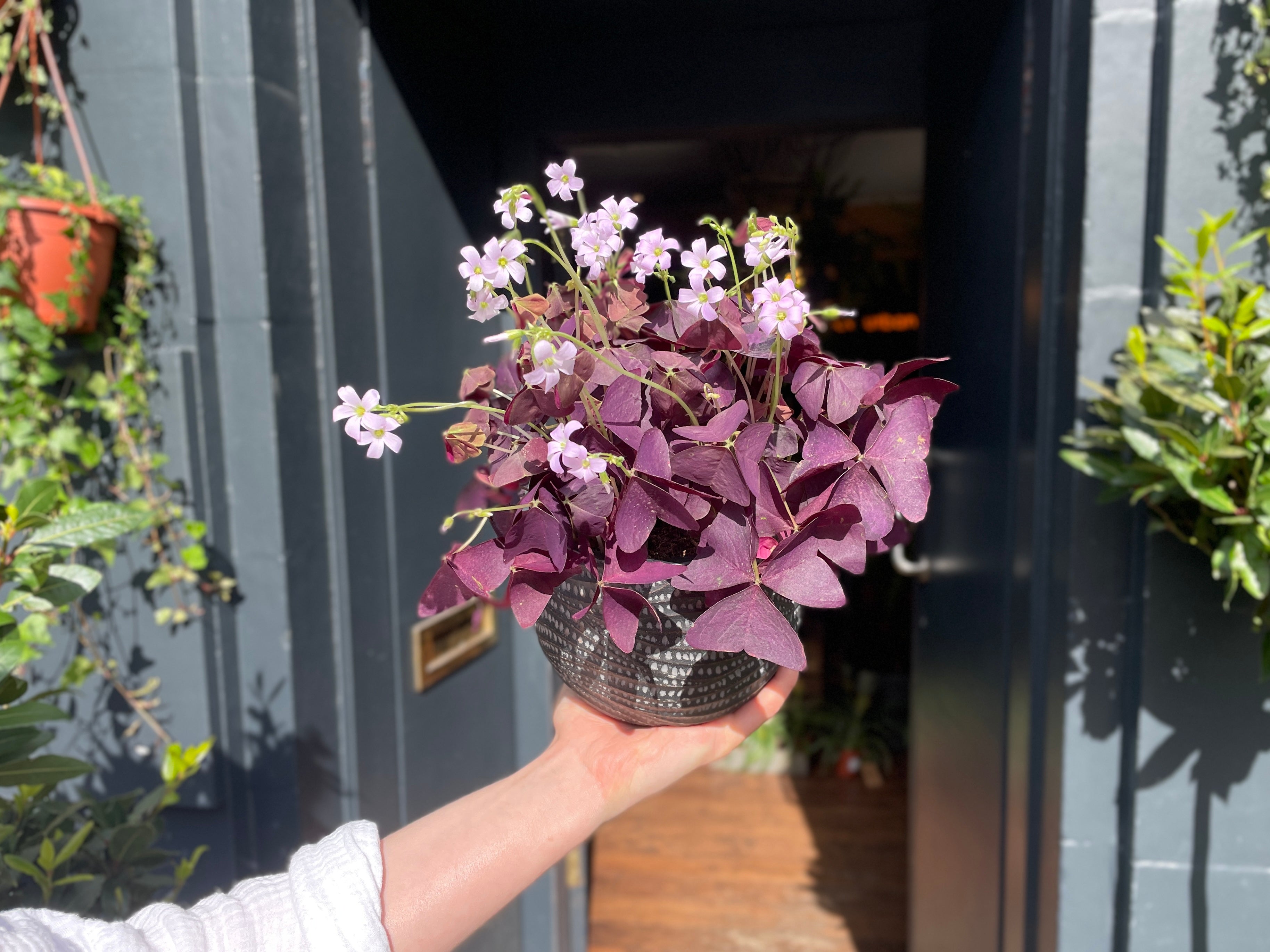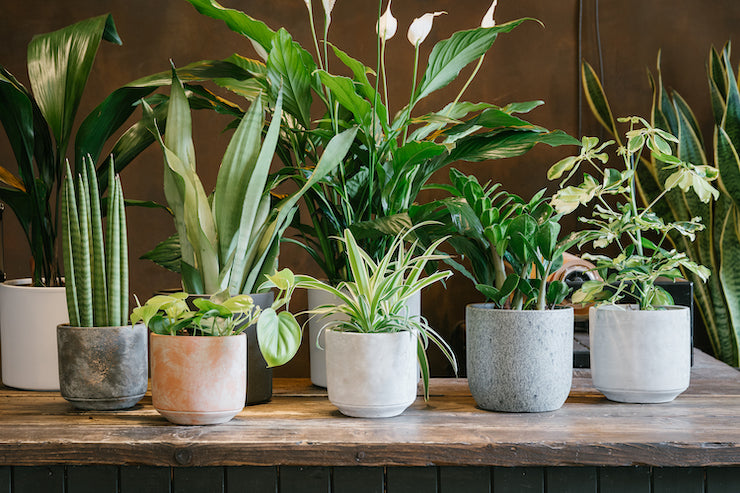
How to Care for Oxalis Triangularis (Purple Shamrock) – The Complete Guide
With its striking purple leaves and delicate triangular shape, Oxalis Triangularis, also known as the Purple Shamrock, is a true showstopper in any indoor plant collection. But behind its beauty lies a quirky personality — this plant can be a little dramatic at times, especially when it enters dormancy.
Here’s everything you need to know to keep your Oxalis thriving, from light and watering to seasonal care.
Light Requirements
Oxalis Triangularis loves bright, indirect light and will thrive near a sunny window that doesn’t receive harsh afternoon rays. It can also handle a few hours of gentle morning sun, which helps keep the stems compact and the colour vibrant.
If the plant doesn’t get enough light, it may become leggy and the leaves may close more often during the day — a tell-tale sign that it's craving more brightness.
Watering Your Oxalis
Water your Oxalis when the top inch of compost feels dry to the touch. During the active growing season (spring through summer), it enjoys regular watering — but always allow excess water to drain fully to avoid soggy roots.
A pot with drainage holes is essential. If you're using a decorative pot, be sure to remove the inner nursery pot before watering and allow it to drain completely before putting it back.
Feeding and General Care
Feed your Oxalis every 4 to 6 weeks during spring and summer with a balanced liquid houseplant fertiliser. We recommend Liquid Gold Leaf, diluted according to the label.
To encourage even, balanced growth, rotate the pot every few weeks so all sides of the plant receive equal light.
What’s With the Leaf Movement?
Don’t be alarmed if your Oxalis opens its leaves during the day and folds them closed at night — this is completely normal! The plant is responding to the light cycle, a behaviour known as nyctinasty. It’s part of its charm.
Dormancy: Is My Oxalis Dead or Just Sleeping?
One of the most misunderstood aspects of Oxalis care is dormancy. If your Purple Shamrock suddenly begins to wilt, droop, or drop its leaves — especially in late summer or autumn — it may be going to sleep, not dying.
This is totally normal and part of its natural lifecycle.
What to do:
-
Stop watering once leaves have died back
-
Place the pot in a cool, dark spot (e.g. a cupboard or shaded shelf)
-
Leave it for 4 to 6 weeks
-
Bring it back into the light and resume gentle watering — new growth should begin soon after
Common Oxalis Problems
Leggy growth?
Usually caused by insufficient light. Move the plant to a brighter location, ideally with some morning sun.
Yellowing leaves?
Often a sign of overwatering or poor drainage. Make sure water isn’t sitting at the bottom of the pot.
Not waking from dormancy?
Check the bulb – if it’s firm, it’s still viable. Be patient and ensure you’ve returned it to a bright spot with gentle watering.
Want One of Your Own?
At Grow Urban, we love plants with personality – and Oxalis Triangularis is full of it. You can shop Oxalis and other unique houseplants online, or pop into our Edinburgh store to find your next plant obsession.
Got a Purple Shamrock already? Tag us @growurban on Instagram and show us how it's growing – we love seeing your leafy successes.



